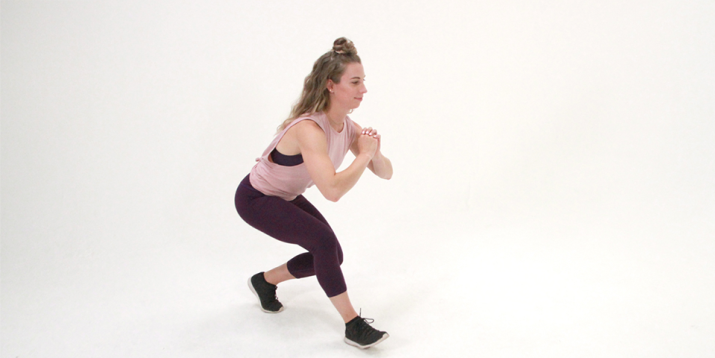How to Do the Duck Walk

Compared to the bear crawl and the mule kick, the duck walk may not sound like the fiercest animal-inspired exercise — and waddling around the weight room may earn you a few strange looks from your fellow gym-goers.
But in all its awkward glory, the duck walk exercise is one of the most challenging and beneficial bodyweight movements you can do.
“The duck walk gives you all of the benefits of a bodyweight squat and then amplifies them,” says Trevor Thieme, CSCS, BODi’s executive director of fitness and nutrition content. “The duck walk keeps you in that squatting position for the entire set, maximizing time under tension, a key growth stimulus.”
Duck Walk Exercise: Step-by-Step Instructions
- Stand with your feet hip-width apart and feet flat on the floor.
- Push your butt back, bend your knees, and lower your hips so your thighs are parallel to the floor (or as low as you can comfortably go while keeping your feet flat on the floor).
- Keep your chest up and extend your arms in front of you for balance.
- Maintaining a squat position — or staying as low as you can comfortably go — step forward with the left foot, then the right foot. Be sure to keep your weight in your heels as you walk.
- Continue to move forward in this manner for the specified number of steps, then reverse the movement and waddle backward to your original starting point.
What Are the Benefits of the Duck Walk?
Once you know how to do duck walks, you can do them pretty much anywhere. You don’t need any equipment or much space — a hallway, stretch of sidewalk, or corner of a playground all work.
And it only takes a few steps of the duck walk exercise to fire up your quads and glutes.
In addition to strengthening most of your lower-body musculature, the duck walk also engages the core musculature.
A strong core is crucial to posture, balance, and proper movement mechanics in both athletic and everyday movements, whether you’re running or carrying groceries.
Incorporating core exercises like the duck walk into your fitness routine can help prevent injuries.
What Muscles Does the Duck Walk Work?
Ducks aren’t known for having strong legs, but you will be if you learn to walk like one — the muscles targeted by the duck walk are some of the largest in your lower body.
Quadriceps
Located on the fronts of your thighs, the quadriceps muscles are responsible for extending your knee.
The four separate muscles of your quads are the rectus femoris, the vastus lateralis, the vastus intermedius, and the vastus medialis.
Glutes
Your glutes, a.k.a. your butt muscles, are good for more than just filling out a pair of jeans.
Together, the gluteus maximus, the gluteus minimus, and the gluteus medius work to extend the hips, draw your thighs outwards and rotate the legs, and stabilize the pelvis.
Calves
Your calves, located on the backs of your legs between your knees and heels, are responsible for plantar flexion, or pointing your toes — like when you jump, leap, or run.
The soleus and gastrocnemius are the two main muscles that make up the calves.




